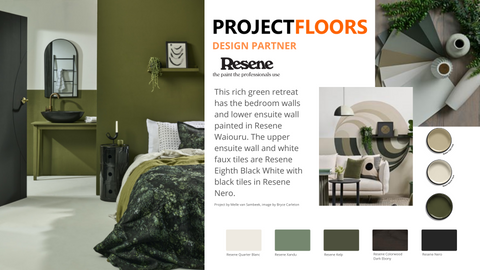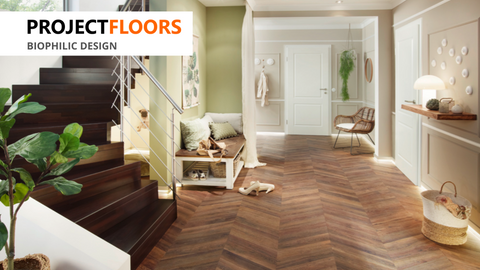
Biophilic design is an approach to architecture and interior design that seeks to incorporate nature into the built environment in a way that enhances people’s health and wellbeing. This can involve the use of natural materials, such as wood and stone, as well as the integration of natural light, plants, and water features. The goal of biophilic design is to create spaces that foster a deeper connection with nature, reduce stress, and increase productivity and creativity. It is based on the idea that humans have an innate affinity for nature and that our physical and mental health can benefit from exposure to natural elements in our surroundings. Biophilic design has gained popularity in recent years as people have become more aware of the importance of sustainable and healthy living environments.
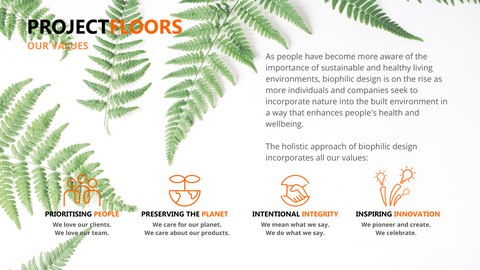
Biophilic design is an approach to building design and architecture that seeks to connect people with nature and the natural environment. Biophilic design has been shown to:
- Improve productivity: A study by Harvard University found that workers in green-certified buildings had 26% higher cognitive function test scores than workers in non-certified buildings. (Source: Harvard T.H. Chan School of Public Health)
- Increase retail sales: A study by Terrapin Bright Green found that biophilic design elements in a retail space can increase sales by up to 30%. (Source: Terrapin Bright Green)
- Reduce stress and anxiety: Exposure to natural elements, such as sunlight and greenery, has been shown to reduce stress and anxiety levels in individuals. (Source: Biophilic Cities)
- Improve health outcomes: A study by the University of Oregon found that hospital patients with a view of nature had shorter postoperative stays, took fewer pain medications, and had fewer complications than patients with no view. (Source: University of Oregon)
- Save costs: Biophilic design elements, such as natural lighting and ventilation, can reduce energy costs in buildings. (Source: International Living Future Institute)

Biophilic design in flooring is a popular trend that involves incorporating natural elements into indoor spaces. This design approach is gaining popularity because it provides numerous benefits, including improved air quality, reduced stress levels, and increased productivity.
One of the key benefits of biophilic design in flooring is its ability to create a calming and relaxing atmosphere. By incorporating natural materials, such as wood or stone, into the flooring, you can create a soothing environment that promotes relaxation and reduces stress.
In addition to its calming effects, biophilic design in flooring can also improve indoor air quality. Natural materials, such as wood and stone, are non-toxic and don’t release harmful chemicals into the air. This means that incorporating these materials into your flooring can help to reduce indoor air pollution and create a healthier indoor environment.
Another benefit of biophilic design in flooring is that it can increase productivity and creativity. Research has shown that incorporating natural elements into indoor spaces can improve cognitive function, increase focus and concentration, and promote creative thinking.
Biophilic design in flooring can also enhance the aesthetic appeal of your space. Natural materials, such as wood and stone, are timeless and elegant, and can add a touch of sophistication to any interior design.
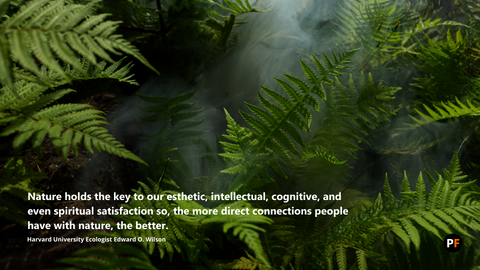
Overall, biophilic design in flooring is an excellent way to create a healthy, calming, and beautiful indoor environment. If you’re looking to improve the look and feel of your indoor space, consider incorporating natural materials into your flooring to take advantage of the many benefits of biophilic design.
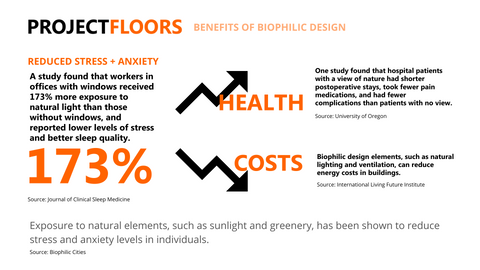
When it comes to flooring, biophilic design can involve the use of materials such as wood, bamboo, cork, or natural stone. These materials can create a sense of warmth, texture, and organic beauty in interior spaces. In addition to their aesthetic qualities, natural materials can also have a positive impact on human health and well-being.
One benefit of using natural materials in flooring is their ability to regulate indoor air quality. Many synthetic flooring materials emit volatile organic compounds (VOCs) that can be harmful to human health. Natural flooring materials, on the other hand, have low or no VOC emissions, which can improve indoor air quality and reduce the risk of respiratory problems.

Another benefit of using natural materials in flooring is their durability and sustainability. Many natural flooring materials, such as bamboo and cork, are highly renewable and can be harvested without harming the environment. These materials also have a long lifespan, which can reduce the need for frequent replacements and reduce waste.
In addition to natural materials, biophilic design in flooring can also involve the use of patterns and textures that mimic natural elements. For example, a carpet with a leaf pattern or a tile with a stone texture can create a sense of connection to nature. We’re very proud of a number of our collections that mimic and draw the beautiful New Zealand landscape inside our residential and commercial spaces as shown in our Enchanted Blue carpet tile below.
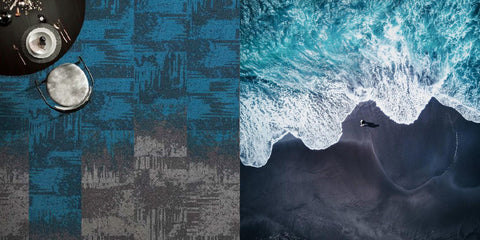
Finally, biophilic design in flooring can also involve the use of natural light and views of nature. Incorporating windows or skylights can provide natural light, while views of trees, water, or other natural elements can create a sense of tranquility and calm.

Biophilic design in flooring can have many benefits for human health, well-being, and the environment. By incorporating natural materials, patterns, textures, and views, we can create interior spaces that connect people to nature and enhance their quality of life.
Why not come and visit us in our Design Hub where you can see and experience the wide range of biophilic flooring options alongside some of our design partner offerings.
